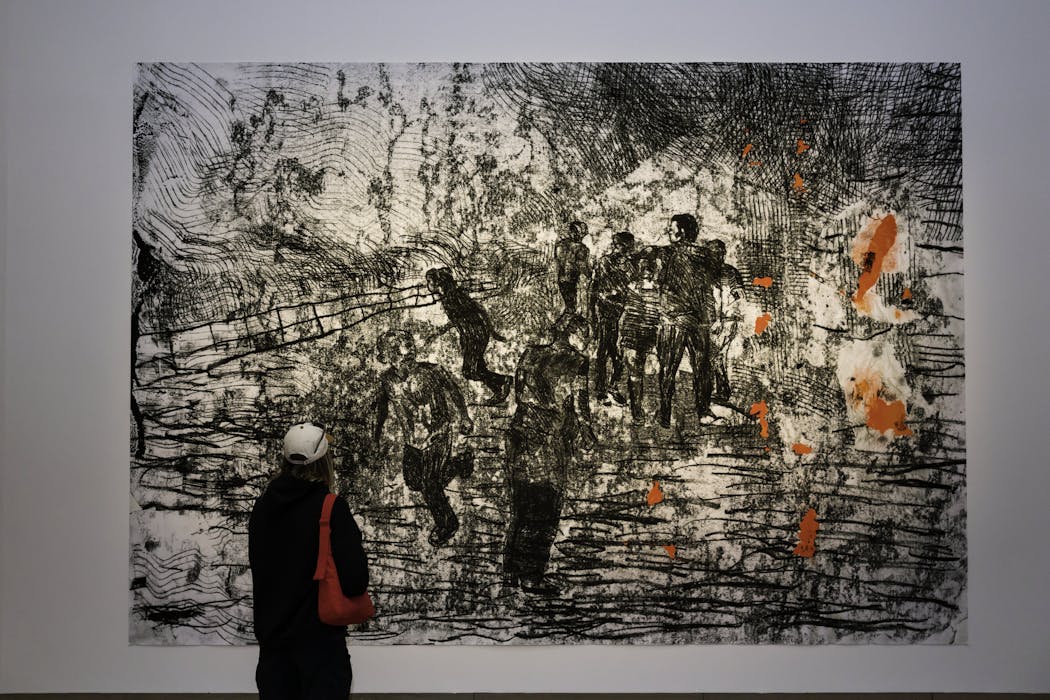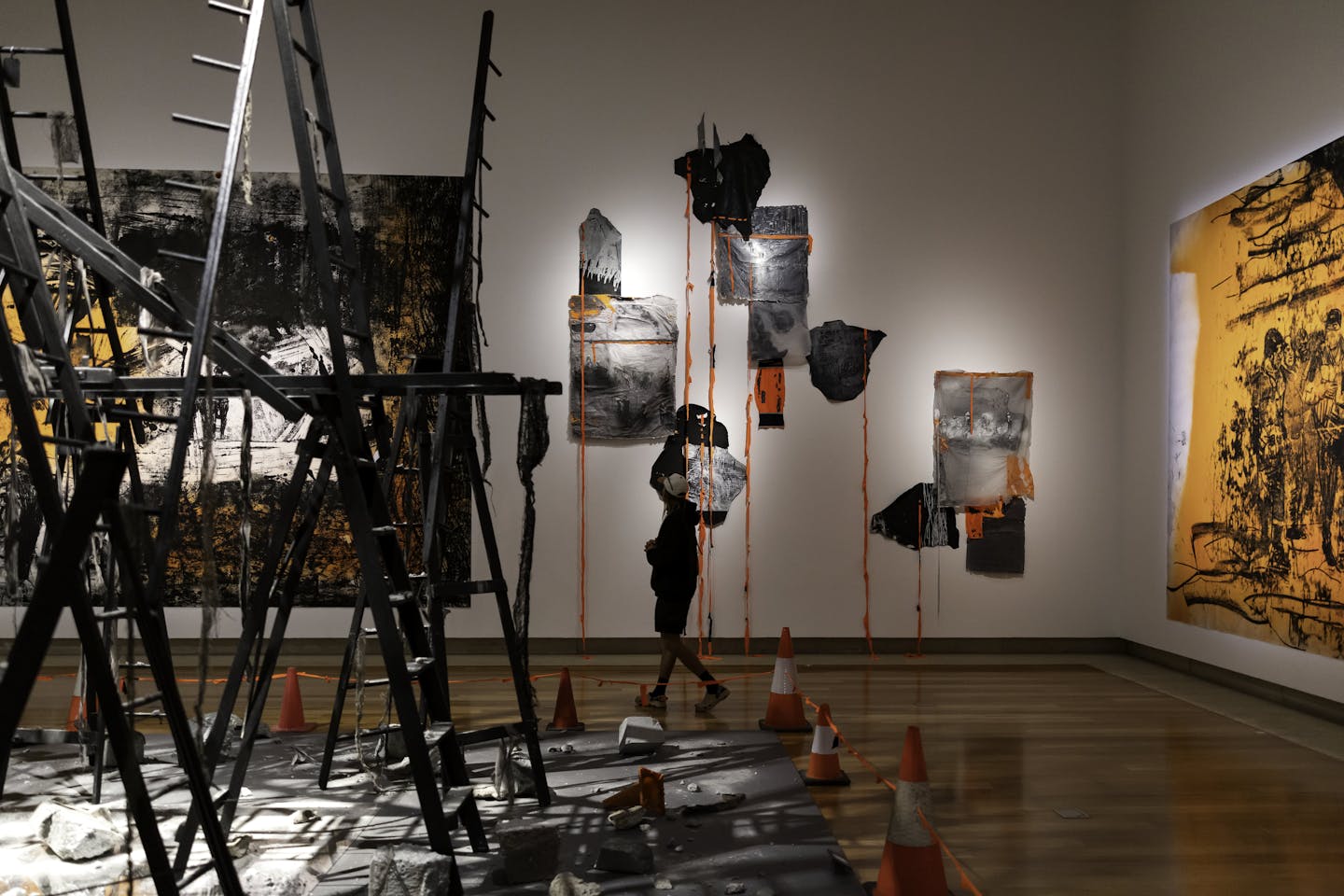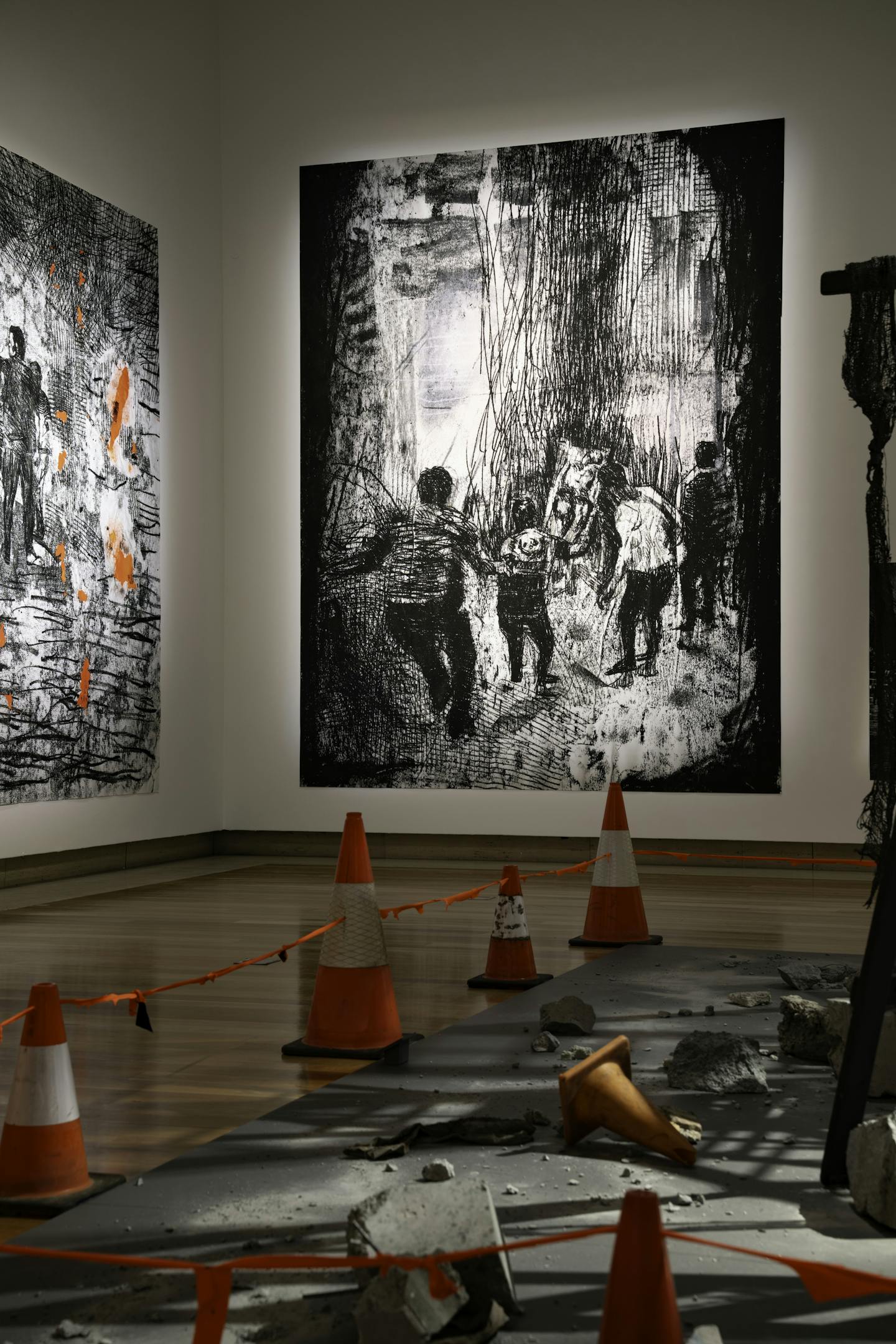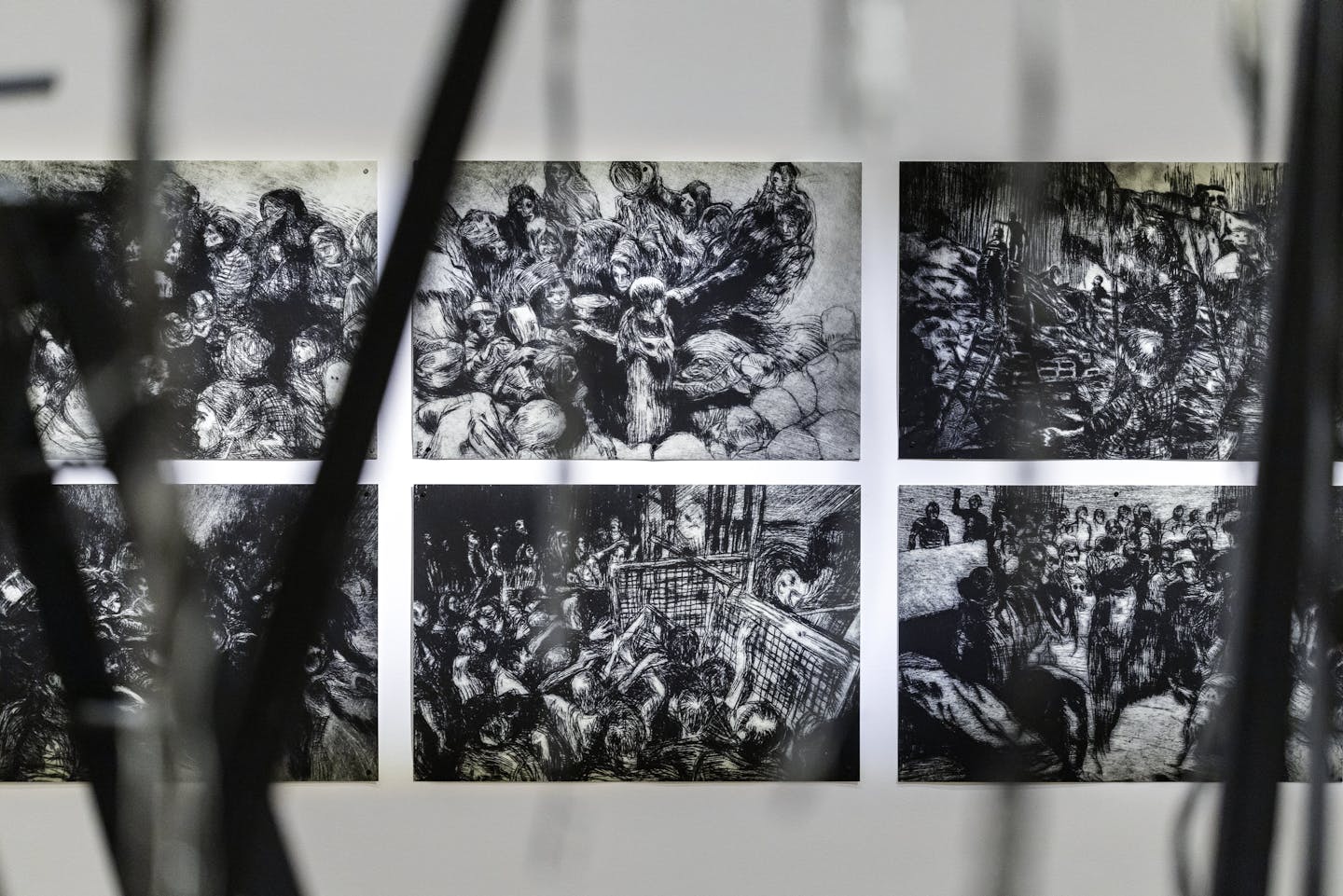
Pat Hoffie’s I have loved/I love/I will love feels like an intervention.
The exhibition at Queensland Art Gallery draws on images aired, day after day, of the conflict that started with the Hamas attack on Israeli civilians on October 7 2023 and continued with the war in the Gaza strip.
Hoffie’s title is adapted from Arundhati Roy’s The Cost of Living (1999) which urges all of us to bear witness, “to never look away”.
And Hoffie offers art as a safe space to air dangerous ideas. She told me she believes
If we can get into a space and it can make us think a little more, or put us in touch with ourselves in a deeper way, then we might gain something.
Obscured by the blackness
The four tall walls of the gallery create a cube that intensifies an immersive experience.
In the centre of the space, wreckage crashes through the ceiling with ladders stretching to the floor. The girth of the rubble-strewn central installation pushes viewers up close to the works inspired by artists like Goya, Picasso and Kollwitz, who addressed the brutality of war in their own prints.
Hoffie’s prints span the four walls (the largest is 375 x 535 cm); some are of human scale. They are generally dark, figures obscured by the blackness; you need to spend time to allow their shapes of stretchers, individuals and people leaning on other people to emerge.

Hoffie engages with the politics of our time: her attention is drawn to injustice and is finely tuned into global events. At the exhibition preview, she asked:
Does art still have the capacity to arrest our gaze and decelerate the look? And does the deceleration or slowing down of the looking make us think more? You can’t assume that it does.
Technically, these prints are revolutionary, difficult to produce.
Monoprints, screenprints and drypoints were made initially on a small scale, with Hoffie’s scratch-marks into the plate expressing her angst about the images raining daily on our screens.
Then they are processed on the computer, printed much larger, and hand-painted with other media overlaid.
Hoffie’s marks, at times, penetrated the paper. These glitches express the physical process, her emotional and, at times, violent investment.
Given this physical interpretation and their layers – of hand-worked paint, and overlaid orange (emergency) tape – their aesthetic expresses a grief we may share.
The posture of duress
This body of work is designed to hang together under one title – I have loved/I love/I will love.
Within the darkness of the prints, the smeary surfaces, the hovering shapes, is selectively applied colour – like a sunrise orange (or afterglow of a bomb), a soft pink rising in the sky beyond a group of people who reach toward each other. In another a bright orange patch emerges like a sunrise to balance a landscape of people who stand, fragmented but close, in the centre of a paddock.

Some figures wear gas masks, others a rabbi’s kippah. Stretchers bear bodies, all individuals wear the posture of duress.
The slow emergence of potential meaning is part of Hoffie’s inspiration and rationale. The aged and ageless appearance of these works is hard to locate in time. She said to me that,
What I wanted was not to do an us and them exhibition. Because for me, what art is, what we’re all involved in, whether we know it or not, is collective mourning, collective grief.
The investment of artists in humanity
Critic Quentin Sprague writes about the role of art in bringing us back to
challenge, or even simply moderate, rusted-on views of the world that all but the most radically open among us can’t help but hold. Good art allows us to see through the consciousness of another person, and for our own world view to shift accordingly.
It is in this space that Hoffie’s work is most outstanding.
In a world in which dissenting views are increasingly repressed, these works invite us out of our comfort zone of conversing only with those of similar views. Groups of impacted peoples occupy surfaces and depths that are seductive and beautifully rendered.

Their rich aesthetic reminds us of the history of print-making, its ability to share information, the investment of artists in humanity and a world view with nuance and shade.
We look deeply into images where there is no black and white, no right and wrong – these are deeply etched expressions of humanity under duress. They decelerate our pace, and our heart rate – and offer the potential to open both heart and mind.
Pat Hoffie: I have loved/I love/I will love is at the Queensland Art Gallery, Brisbane, until February 1 2026.
This article is republished from The Conversation, a nonprofit, independent news organization bringing you facts and trustworthy analysis to help you make sense of our complex world. It was written by: Louise Martin-Chew, The University of Queensland
Read more:
- Monsters, menopause and bold women – what to see, read and visit this week
- Can Netanyahu survive peace?
- Israel is still not allowing international media back into Gaza, despite the ceasefire
Louise Martin-Chew does not work for, consult, own shares in or receive funding from any company or organisation that would benefit from this article, and has disclosed no relevant affiliations beyond their academic appointment.


 The Conversation
The Conversation
 CBS Minnesota News
CBS Minnesota News Deseret News
Deseret News CNN
CNN 48 Hills
48 Hills AlterNet
AlterNet America News
America News Associated Press US News
Associated Press US News Bored Panda
Bored Panda